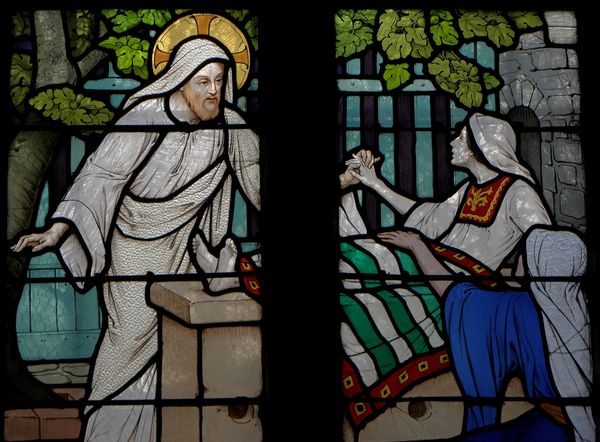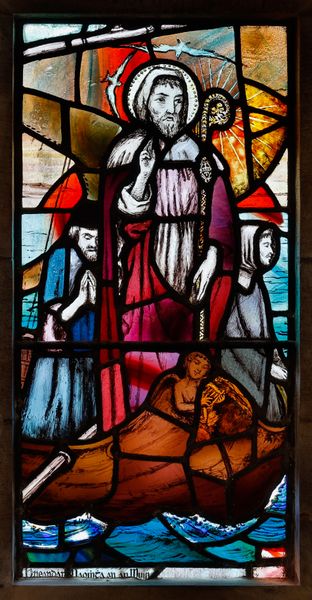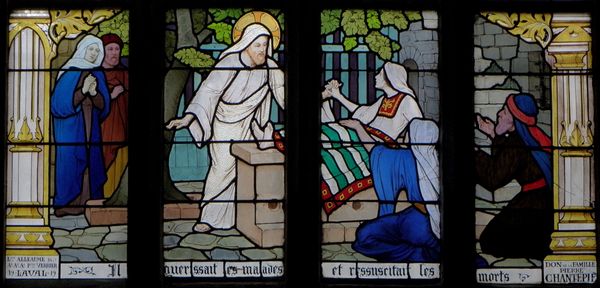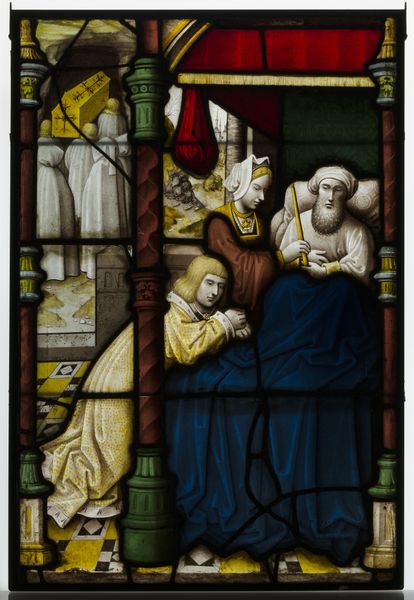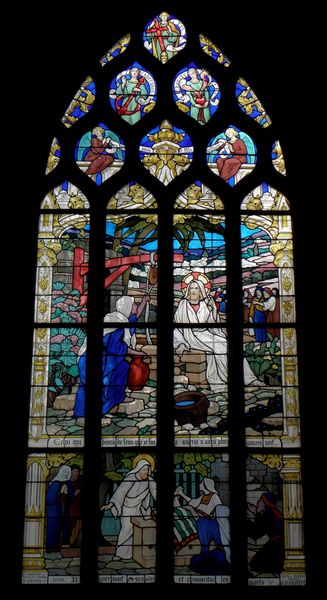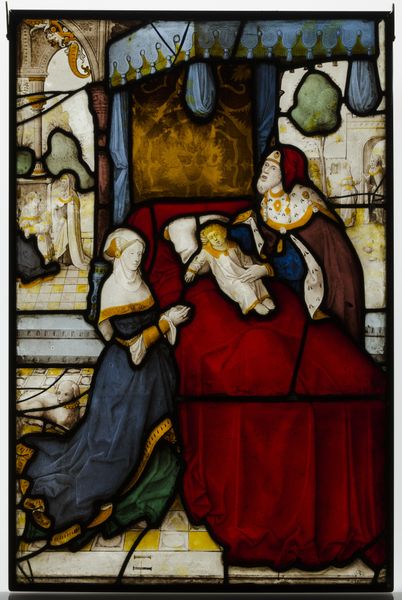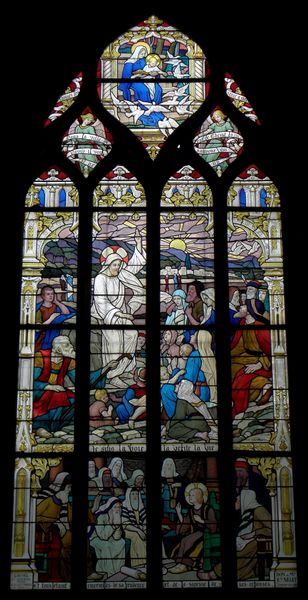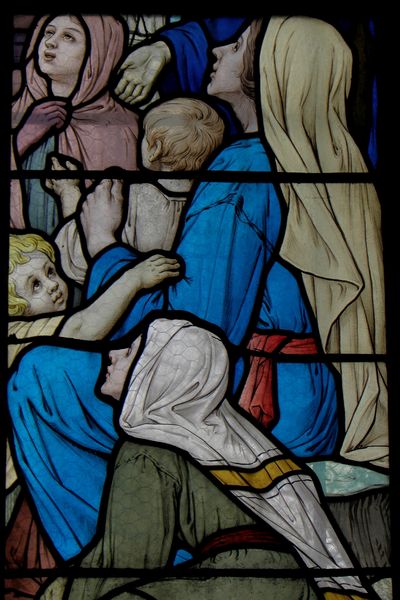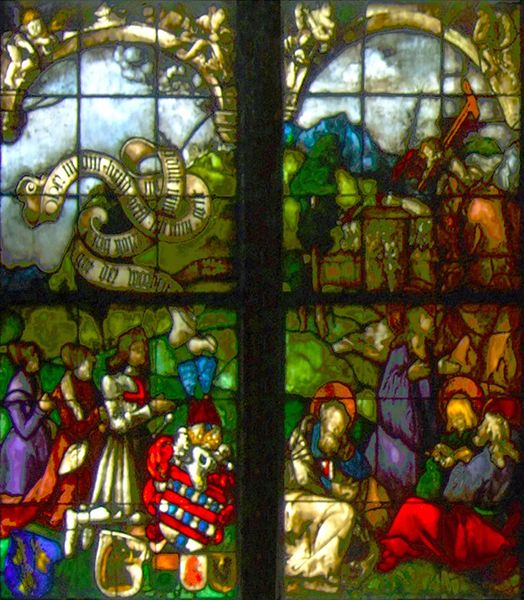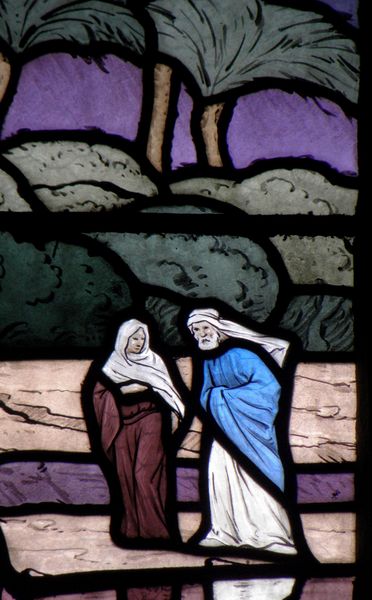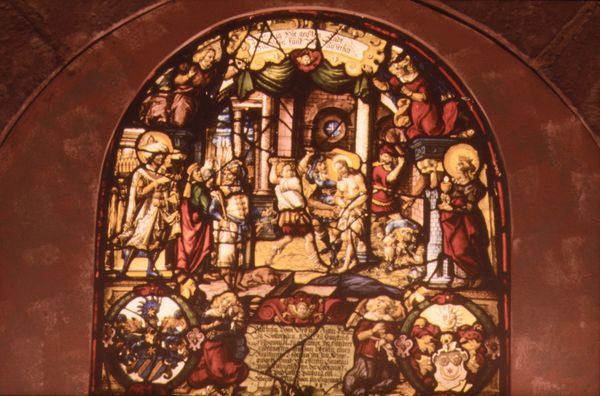
Life of Christ. Eglise Saint-Sulpice de Fougères (1er Registre. L'enfant Jésus Et Les Docteurs) 1919
0:00
0:00
stain, painting, glass
#
stain
#
narrative-art
#
painting
#
glass
#
symbolism
#
history-painting
Copyright: Public domain
Curator: This stained-glass piece, entitled "Life of Christ: L'enfant Jésus et Les Docteurs," was created in 1919 by Ludovic Alleaume for the Église Saint-Sulpice de Fougères. My first impression is the striking combination of intense colors against the dark lead lines—it feels both antique and incredibly vivid. Editor: It does evoke a powerful narrative feel with the bold leading reinforcing the separation of characters. Let’s think about this from the ground up—what glass was used here and how did the process of production inform the end product? Were these colors readily available at the time, impacting Alleaume’s choices? Curator: That's an interesting point, but from a more historical perspective, how might the church’s socio-economic position and that of its parishioners shaped Alleaume’s work and that of its patron’s as reflected in the inscription details? The prominent display in a church also tells us about its intended public function. Editor: Yes, considering the church's commission offers us a peek at the labor and funding required. Was the choice of stained glass seen as a common artistic method at that time, or would have it be a significant decision reflecting available skill within a specific community? And what kind of statement are both patron and church making? Curator: Right. Looking at the symbolism and the broader historical context is also key. This scene, depicting the young Jesus astounding the elders with his wisdom, resonates with a specific theology, and likely also spoke to the contemporary social and political anxieties. How effective, historically speaking, do you feel it conveys this to the viewer? Editor: It's also very interesting to explore how each of these individuals would be tasked with creating stained glass work that reflects historical events! This type of stained-glass has more use of paint work versus colored glass; were glass paint readily available or costly at the time? Was the division of work based on those skills? Curator: Absolutely, you know, thinking of those practical considerations makes this much richer to interpret; considering all those various components and the politics around these visual representations enhances my overall understanding and it is something the contemporary visitor might appreciate and reflect about Editor: Likewise, focusing on production and the division of labor within workshops reframes our appreciation of this kind of religious visual.
Comments
No comments
Be the first to comment and join the conversation on the ultimate creative platform.
